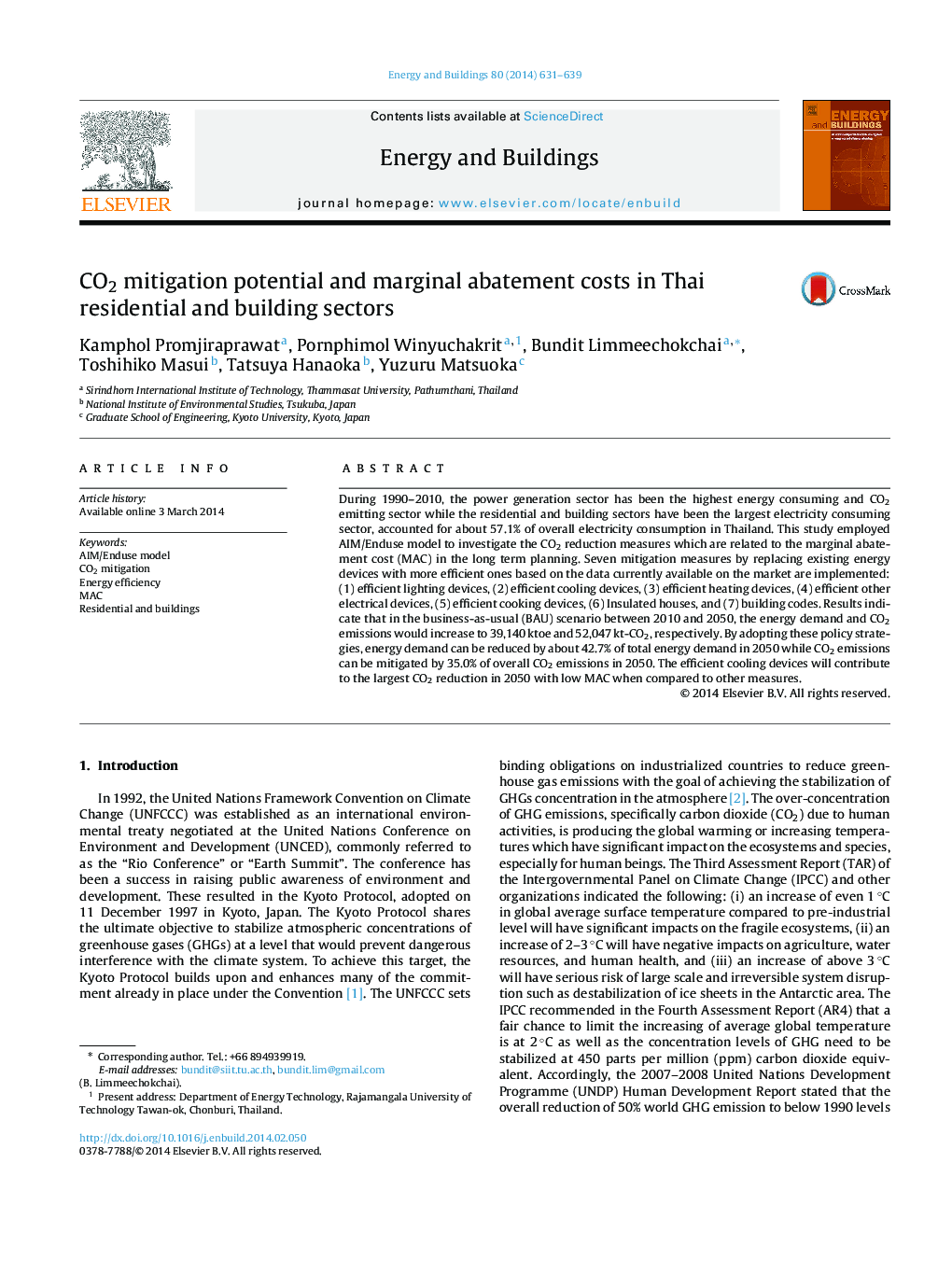| کد مقاله | کد نشریه | سال انتشار | مقاله انگلیسی | نسخه تمام متن |
|---|---|---|---|---|
| 262806 | 504050 | 2014 | 9 صفحه PDF | دانلود رایگان |

• Proposed countermeasures contribute to energy savings up to 43% by the year 2050.
• Advanced cooling technologies provide the negative marginal abatement cost.
• Thai residential and building sectors are achieved for 35.0% of CO2 mitigation.
• AIM/Enduse estimates energy use and CO2 emission in Thai households and buildings.
• Efficiency improvement is the cost-effective option for building development.
During 1990–2010, the power generation sector has been the highest energy consuming and CO2 emitting sector while the residential and building sectors have been the largest electricity consuming sector, accounted for about 57.1% of overall electricity consumption in Thailand. This study employed AIM/Enduse model to investigate the CO2 reduction measures which are related to the marginal abatement cost (MAC) in the long term planning. Seven mitigation measures by replacing existing energy devices with more efficient ones based on the data currently available on the market are implemented: (1) efficient lighting devices, (2) efficient cooling devices, (3) efficient heating devices, (4) efficient other electrical devices, (5) efficient cooking devices, (6) Insulated houses, and (7) building codes. Results indicate that in the business-as-usual (BAU) scenario between 2010 and 2050, the energy demand and CO2 emissions would increase to 39,140 ktoe and 52,047 kt-CO2, respectively. By adopting these policy strategies, energy demand can be reduced by about 42.7% of total energy demand in 2050 while CO2 emissions can be mitigated by 35.0% of overall CO2 emissions in 2050. The efficient cooling devices will contribute to the largest CO2 reduction in 2050 with low MAC when compared to other measures.
Journal: Energy and Buildings - Volume 80, September 2014, Pages 631–639